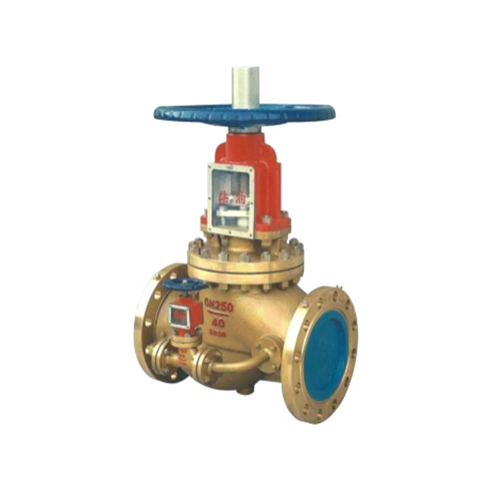
Ball Valve Selection for High Pressure Steam Systems
1. Introduction
Ball valves are widely used in industrial applications due to their reliability, durability, and ability to provide tight shut-off. In high-pressure steam systems, selecting the right ball valve is critical to ensure safety, efficiency, and longevity. High-pressure steam applications present unique challenges, including thermal expansion, pressure fluctuations, and potential erosion or corrosion.
This guide provides a comprehensive overview of key considerations when selecting ball valves for high-pressure steam systems, including material selection, design features, pressure and temperature ratings, and maintenance requirements.
---
2. Understanding High-Pressure Steam Systems
2.1 Characteristics of High-Pressure Steam
High-pressure steam typically operates at pressures above 15 bar (217 psi) and temperatures exceeding 200°C (392°F). Common industrial applications include power plants, chemical processing, and manufacturing facilities. Key challenges include:
- Thermal expansion – Metal components expand under high temperatures, affecting sealing performance.
- Pressure surges – Rapid changes in pressure can damage valve components.
- Erosion and corrosion – Steam can degrade valve materials over time, especially if impurities are present.
2.2 Why Ball Valves Are Suitable for Steam Systems
Ball valves offer several advantages for steam applications:
- Quick operation – A 90-degree turn fully opens or closes the valve.
- Bubble-tight shut-off – Properly designed ball valves prevent steam leakage.
- Low pressure drop – The full-bore design minimizes flow resistance.
- Durability – Robust construction withstands high pressures and temperatures.
However, not all ball valves are suitable for steam service. Careful selection is necessary to avoid premature failure.
---
3. Key Selection Criteria for Ball Valves in High-Pressure Steam Systems
3.1 Pressure and Temperature Ratings
- Maximum Allowable Pressure (MAWP) – The valve must be rated for the system’s peak operating pressure, including potential surges.
- Temperature limits – Materials must withstand continuous exposure to high temperatures without deformation or weakening.
- ASME/ANSI standards – Compliance with standards such as ASME B16.34 ensures proper pressure-temperature ratings.
3.2 Material Selection
Body Materials
- Carbon steel (ASTM A216 WCB) – Common for high-pressure steam due to strength and temperature resistance.
- Stainless steel (ASTM A351 CF8/CF8M) – Offers better corrosion resistance, ideal for superheated steam.
- Alloy steels (ASTM A217 WC6/WC9) – Used in extreme temperature and pressure conditions.
Seat and Seal Materials
- PTFE (Teflon) – Good for moderate temperatures but may degrade above 200°C (392°F).
- Reinforced PTFE (RPTFE) – Extends temperature resistance slightly.
- PEEK (Polyether ether ketone) – High-temperature thermoplastic suitable for steam up to 260°C (500°F).
- Metal seats – Used in ultra-high-temperature applications (>500°C/932°F).
Ball and Stem Materials
- Stainless steel (316SS, 17-4PH) – Resistant to corrosion and wear.
- Chrome-plated or hardened balls – Improve durability in abrasive steam conditions.
3.3 Valve Design Considerations
Full Port vs. Reduced Port
- Full-port (full-bore) ball valves – Minimize pressure drop, ideal for steam systems.
- Reduced-port valves – Lower cost but increase flow resistance, not recommended for high-pressure steam.
Floating vs. Trunnion-Mounted Ball
- Floating ball valves – The ball is held in place by seat pressure; suitable for moderate pressures.
- Trunnion-mounted ball valves – The ball is mechanically anchored, making them ideal for high-pressure applications (>1000 psi).
Seat Design
- Soft-seated (elastomer/PTFE) – Provides tight shut-off but limited to lower temperatures.
- Metal-seated – Better for high-temperature steam but may allow minor leakage.
3.4 End Connections
- Flanged ends (ASME B16.5/EN 1092-1) – Common for high-pressure steam due to secure sealing.
- Butt-weld ends (ASME B16.25) – Used in critical steam lines to prevent leakage.
- Threaded ends (NPT/BSPT) – Suitable for smaller, low-pressure steam applications.
3.5 Actuation Options
- Manual operation – Hand levers or gear operators for standard applications.
- Pneumatic or electric actuation – Used for automated control in large steam systems.
---
4. Common Failure Modes and Mitigation Strategies
4.1 Steam Erosion
- Cause: High-velocity steam can erode valve internals.
- Solution: Use hardened materials, full-port designs, and avoid throttling.
4.2 Thermal Cycling Stress
- Cause: Repeated heating and cooling can cause material fatigue.
- Solution: Select valves with thermal expansion-resistant materials.
4.3 Seat Degradation
- Cause: High temperatures can deform soft seats.
- Solution: Use high-temperature-resistant materials like PEEK or metal seats.
4.4 Stem Leakage
- Cause: Thermal expansion can compromise stem seals.
- Solution: Use graphite packing or live-loaded stem seals.
---
5. Installation and Maintenance Best Practices
5.1 Proper Installation
- Ensure correct alignment to avoid stress on valve body.
- Use appropriate gaskets and bolting for flanged connections.
- Follow torque specifications for stem and seat components.
5.2 Routine Maintenance
- Inspect seals and seats – Replace if signs of wear or leakage.
- Lubricate stems and bearings – Use high-temperature grease.
- Check for steam leakage – Use ultrasonic or thermal imaging for early detection.
5.3 Testing and Certification
- Hydrostatic testing – Ensures valve integrity before installation.
- Fugitive emissions testing – Confirms compliance with environmental standards.
---
6. Industry Standards and Compliance
- ASME B16.34 – Pressure-temperature ratings for valves.
- API 6D – Specifications for pipeline ball valves.
- ISO 17292 – Metallic ball valves for petroleum and related industries.
- EN 12516 – European standards for industrial valves.
---
7. Conclusion
Selecting the right ball valve for high-pressure steam systems requires careful consideration of pressure, temperature, materials, and design features. Proper installation and maintenance further ensure long-term reliability. By adhering to industry standards and understanding failure modes, engineers can optimize valve performance in demanding steam applications.
For critical systems, consulting with valve specialists and conducting thorough testing is recommended to ensure safety and efficiency.
यह वेबसाइट यह सुनिश्चित करने के लिए कुकीज़ का उपयोग करती है कि आपको हमारी वेबसाइट पर सर्वोत्तम अनुभव मिले।
टिप्पणी
(0)